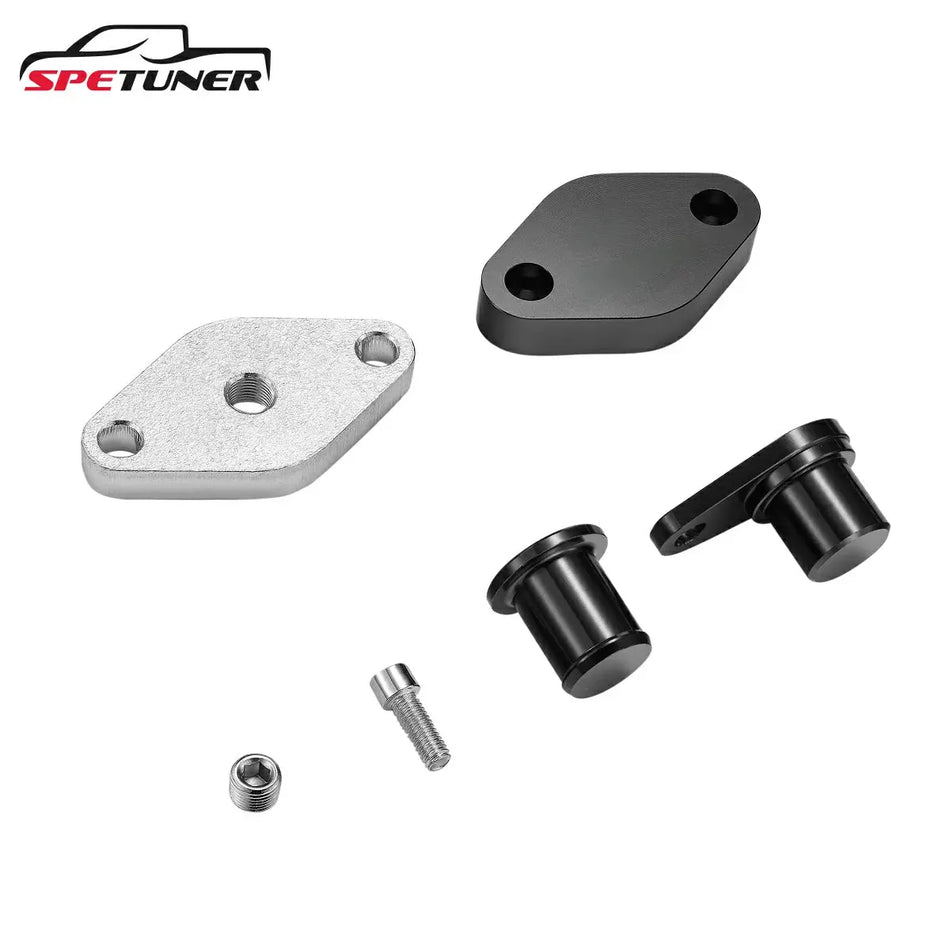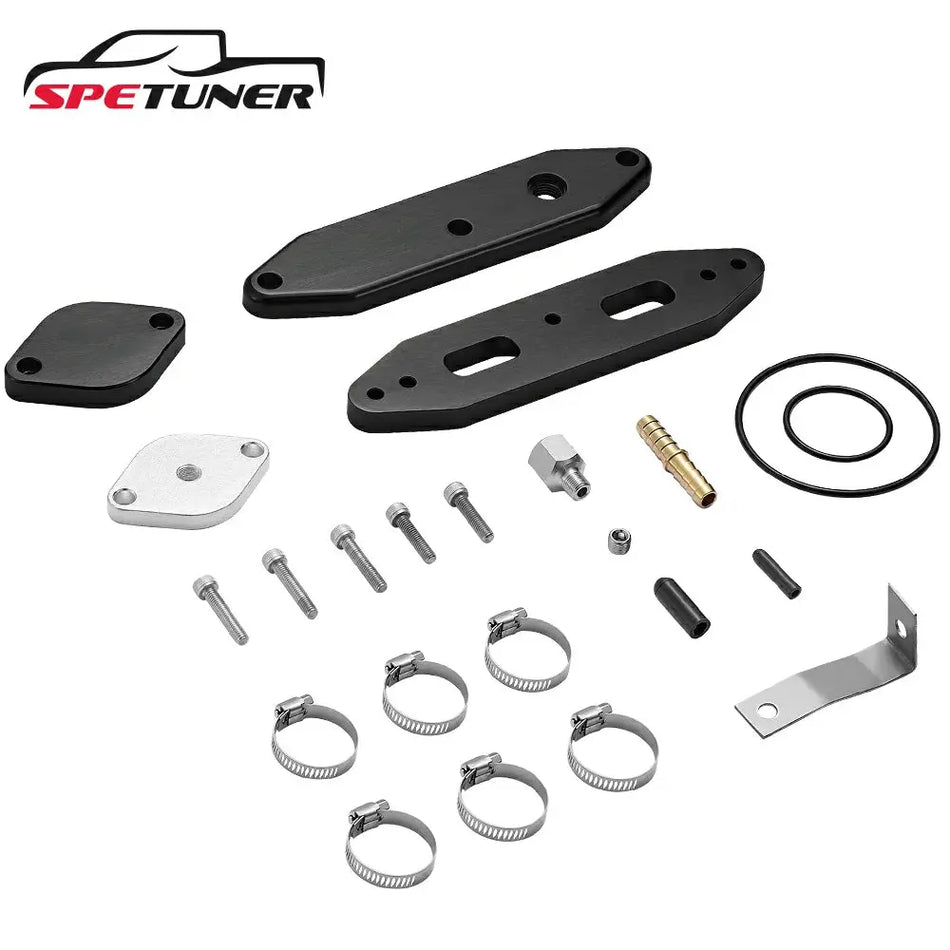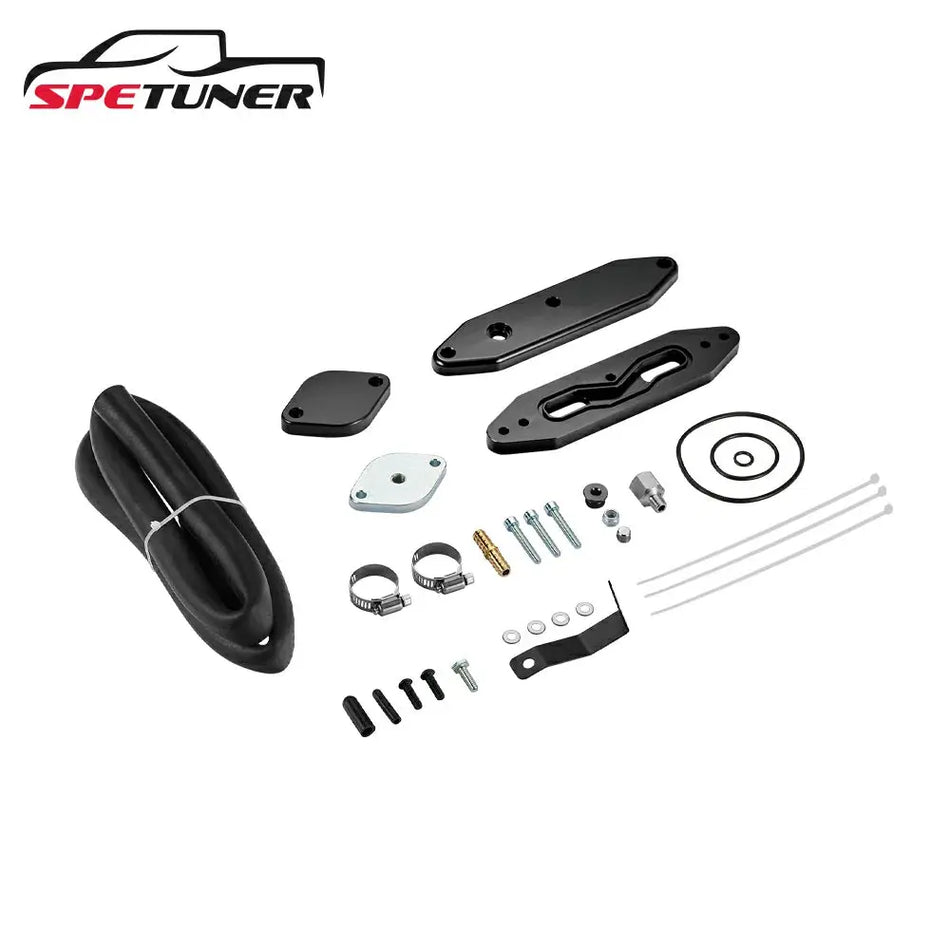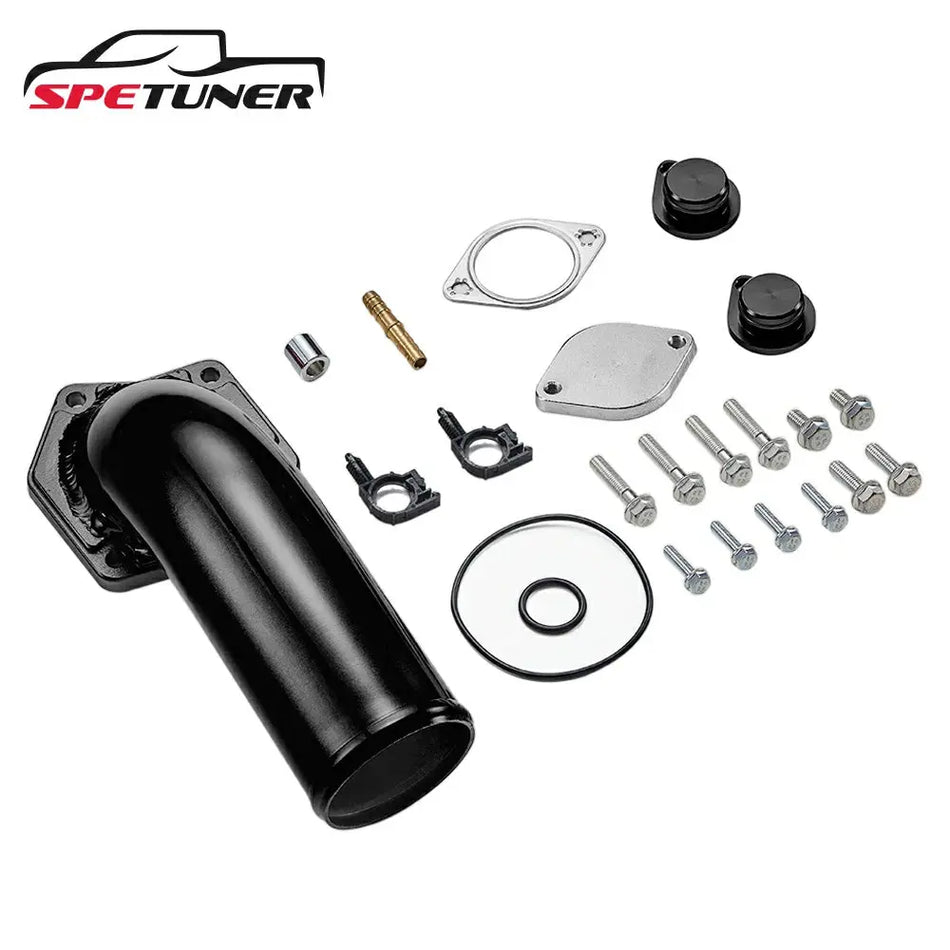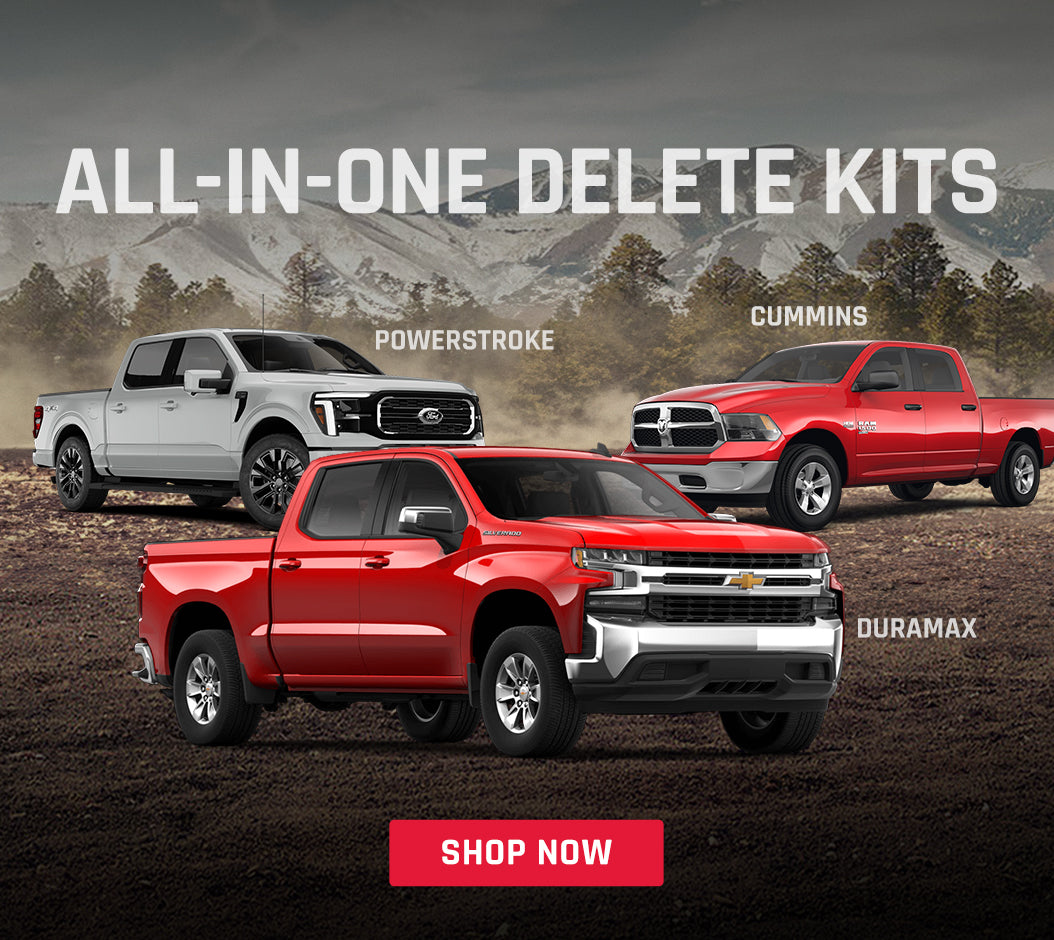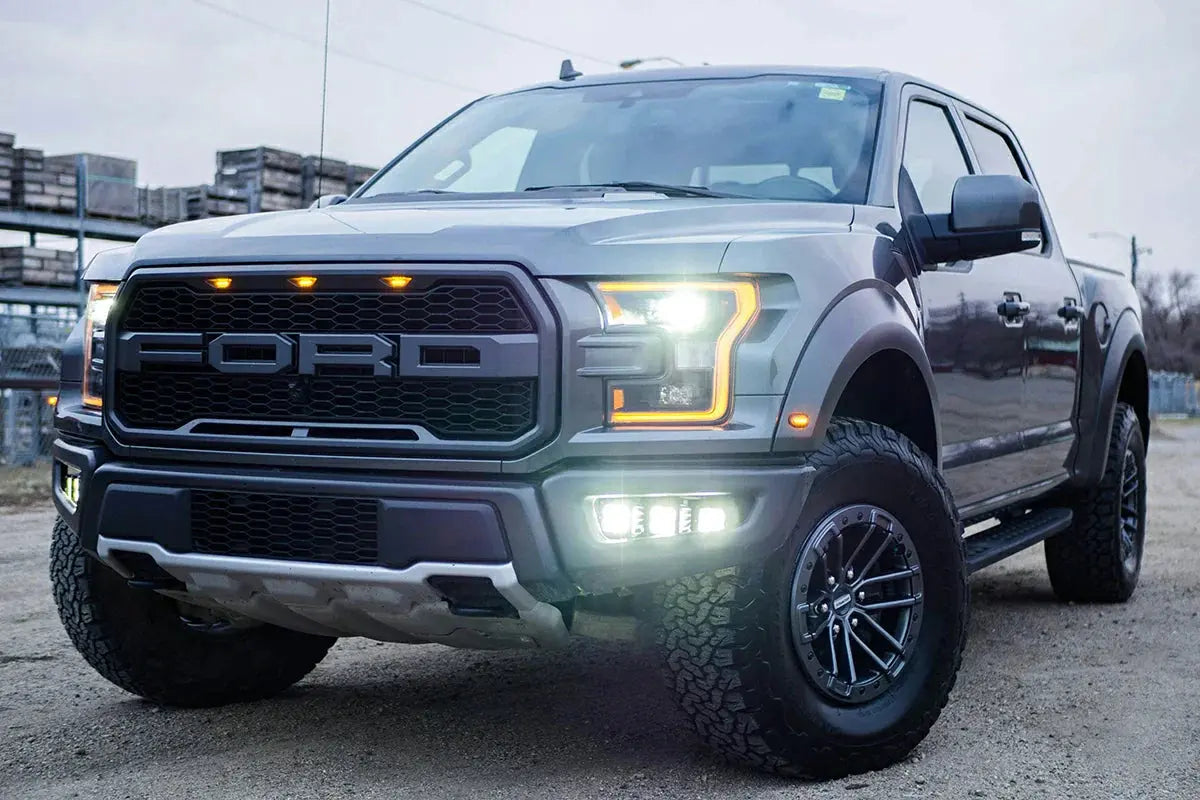The Crankcase Ventilation System (CCV) plays a critical role in diesel engine performance. In this guide, we'll explore what a CCV reroute does, its benefits for diesel engines like the 6.7 Cummins, Powerstroke, and Duramax, and how this simple modification can help maintain engine efficiency by reducing carbon deposits and extending engine life.
What is a CCV System? Understanding CCV Meaning
The CCV (Crankcase Ventilation) system is an essential part of the engine's exhaust and emission control mechanisms. Its primary function is to vent the oil and exhaust gases from the crankcase, preventing excessive pressure that could damage engine components. By routing these gases back into the intake manifold, the CCV system reduces emissions but can also cause carbon buildup over time.
However, the CCV system meaning extends beyond just pressure control. It is crucial for the health and longevity of diesel engines, especially in high-performance or off-road environments where heat and exhaust gases can accumulate quickly.

What is a CCV Reroute?
A CCV reroute is a modification that redirects the crankcase exhaust gases away from the intake system, venting them directly to the atmosphere or an oil collector. This change can help prevent carbon buildup in critical components like the intake manifold and turbocharger, particularly in heavy-duty or off-road applications where the engine operates under extreme conditions.
By performing a CCV filter, you can bypass the intake system entirely, allowing your engine to breathe easier, reducing the chance of harmful deposits, and keeping performance at optimal levels.
Why Do You Need a CCV Reroute?
If your vehicle is equipped with the standard CCV system, you may be at risk of carbon buildup in the intake system. When oil mist and exhaust gases flow back into the intake manifold and turbocharger, they can form sludge that reduces airflow and degrades engine performance.
A CCV reroute offers several advantages:
- Reduces carbon deposits: By preventing oil and exhaust gases from entering the intake system, it helps reduce the formation of carbon deposits, ensuring smoother engine performance.
- Protects engine components: Key engine parts like the turbocharger are less likely to suffer wear and tear from the contaminants that would otherwise enter the intake.
- Enhances off-road performance: In high-load or off-road conditions, the CCV reroute ensures more stable and reliable engine function.
- Reduces maintenance costs: You won’t need to clean the intake manifold as frequently, saving on maintenance in the long run.
Main Benefits of a CCV Reroute
-
Prevents Carbon Buildup A CCV reroute effectively prevents oil and gas from entering the intake tract, significantly reducing the formation of carbon deposits. This leads to a cleaner intake system, improved engine efficiency, and a reduction in long-term maintenance needs.
-
Protects Engine Components By rerouting crankcase gases, the modification helps safeguard vital components like the turbocharger and intake valves, extending their lifespan and reducing the likelihood of costly repairs.
-
Improves Off-Road Performance Diesel engines operating in harsh environments, such as off-road conditions, benefit greatly from a CCV reroute. It ensures stable engine performance even in the most demanding situations.
-
Lower Maintenance Costs Keeping your intake system cleaner means you’ll spend less time and money cleaning the manifold and turbocharger, making it a cost-effective modification in the long run.

How to Install a CCV Reroute? (Using RAM 6.7L Cummins as an Example)
Installing a CCV reroute kit is a straightforward process that can be done by DIY enthusiasts with basic tools. Here’s a step-by-step guide using the RAM 6.7L Cummins as an example:
Step 1: Locate the Crankcase Ventilation System The first step is locating the crankcase ventilation system. After opening the hood, you’ll see the plastic cover on top of the engine. This cover shields the valve cover, which houses the CCV system.
Step 2: Remove the Original CCV System Remove the plastic cover to expose the original CCV system. You will see two connections: one for exhaust gas and the other for oil return. Carefully disconnect these parts.
Step 3: Install the Reroute Kit Install the new CCV reroute kit by plugging the oil return port and connecting the silicone hose to the exhaust outlet. Route the hose away from high-temperature areas, such as the turbocharger, and secure it with cable ties to prevent movement.
Step 4: Test and Adjust Start the engine and check for any leaks around the hose connections. If any leaks are detected, tighten the fittings or adjust the hose placement.
Special Reminders
-
Oil Collector Optional: If you often operate in high-load or off-road conditions, consider adding an oil collector to filter out the oil mist in the exhaust gases, preventing it from dripping onto the ground.
-
Legal Compliance: Keep in mind that CCV reroute kits are usually labeled "Off-Road Use Only" due to emission regulations. If your vehicle is used on public roads, check local laws to ensure compliance.

Special reminder
Oil collector optional:
If your car often runs in high-load conditions, such as pulling heavy goods or off-roading, it is recommended to add an oil collector. It can filter out the oil mist in the exhaust gas and avoid dripping oil everywhere under the car.
Legal issues:
CCV Reroute is usually marked as "Off-Road Use Only". If your car runs on public roads, remember to check local regulations to avoid problems.
Last point: Be patient
Although the entire installation is not complicated, details determine success or failure. Especially the hose routing and interface sealing, these small places must not be careless.
After installation, you will find that the engine runs smoother and the cleanliness can be significantly improved. In the long run, this is a very cost-effective modification!
I hope these tips are helpful to you, give it a try! If you have any questions, remember to consult a professional or check the kit manual at any time.
Is CCV Reroute compliant?
In the United States, most CCV Reroute kits are labeled "Off-Road Use Only". This means that they are not suitable for public road vehicles, especially under strict emission regulations.
To ensure legality and environmental responsibility, you need to understand and comply with relevant laws and regulations. For example, the EPA (U.S. Environmental Protection Agency) has very strict regulations on vehicle emission systems. If your vehicle needs to be driven on public roads, please choose the modification plan carefully.
Learn more about environmental regulations
The following resources can help you learn more about environmental regulations and environmental organizations:
- EPA: Vehicle Emission System Regulations
- Natural Resources Defense Council: Reducing Traffic Pollution
- Sierra Club: Clean Transportation Initiative
By referring to these resources, you can have a clearer understanding of the relationship between CCV Reroute and emission regulations, and perform modifications under the premise of legality.

Conclusion
Performing a CCV reroute can dramatically improve your engine's cleanliness, performance, and longevity, especially in off-road or high-performance conditions. However, always ensure that the modification is legally compliant in your area, especially if you drive on public roads.
By understanding the CCV system meaning and how a CCV reroute can benefit your engine, you can make an informed decision about modifying your vehicle for better performance and protection.
FAQs
Q1: What is the purpose of a CCV system?
A1: The CCV system helps release pressure from your engine’s crankcase by venting gases and oil vapors, preventing pressure buildup and protecting internal components.
Q2: Why should I consider a PCV or CCV reroute?
A2: Rerouting your PCV or CCV system prevents oil vapors from entering your intake system, reducing carbon buildup, keeping your engine cleaner, and improving long-term performance.
Q3: What are the benefits of a CCV reroute for off-road vehicles?
A3: A CCV reroute can significantly improve engine performance in off-road or high-load conditions by keeping the intake system clean and preventing carbon buildup.
Q4: Is a CCV reroute legal for on-road vehicles?
A4: CCV reroutes are typically labeled "Off-Road Use Only" due to emissions regulations. Always check your local laws to ensure compliance if you plan to use the modification on public roads.
Q5: Does a CCV reroute improve fuel efficiency?
A5: While not directly aimed at fuel efficiency, a CCV reroute can indirectly help by keeping the intake system clean, which maintains optimal airflow and engine performance over time.
Q6: Can a CCV reroute damage my engine?
A6: When installed correctly, a CCV reroute will not damage your engine. It protects components by preventing oil mist from recirculating into the intake.
Q7: Is a CCV reroute legal for on-road vehicles?
A7: CCV reroutes are typically intended for Off-Road Use Only due to emissions regulations. Always check local laws to ensure compliance before installation.
Q8: How do I know if my CCV filter needs replacing?
A8: Signs include reduced engine performance, increased oil consumption, or visible residue around the intake. If in doubt, inspect the filter or follow your vehicle’s maintenance schedule.
Q9: What’s the difference between a PCV and a CCV system?
A9: The PCV (Positive Crankcase Ventilation) system is common in gasoline engines, while the CCV system is designed for diesel engines. Both serve to vent crankcase gases but differ in operation due to engine type.
Q10: Can I install a CCV reroute myself?
A10: Yes! Most kits are designed for DIY installation with basic tools. Just follow the instructions carefully, pay attention to sealing connections, and ensure proper routing to avoid issues.


